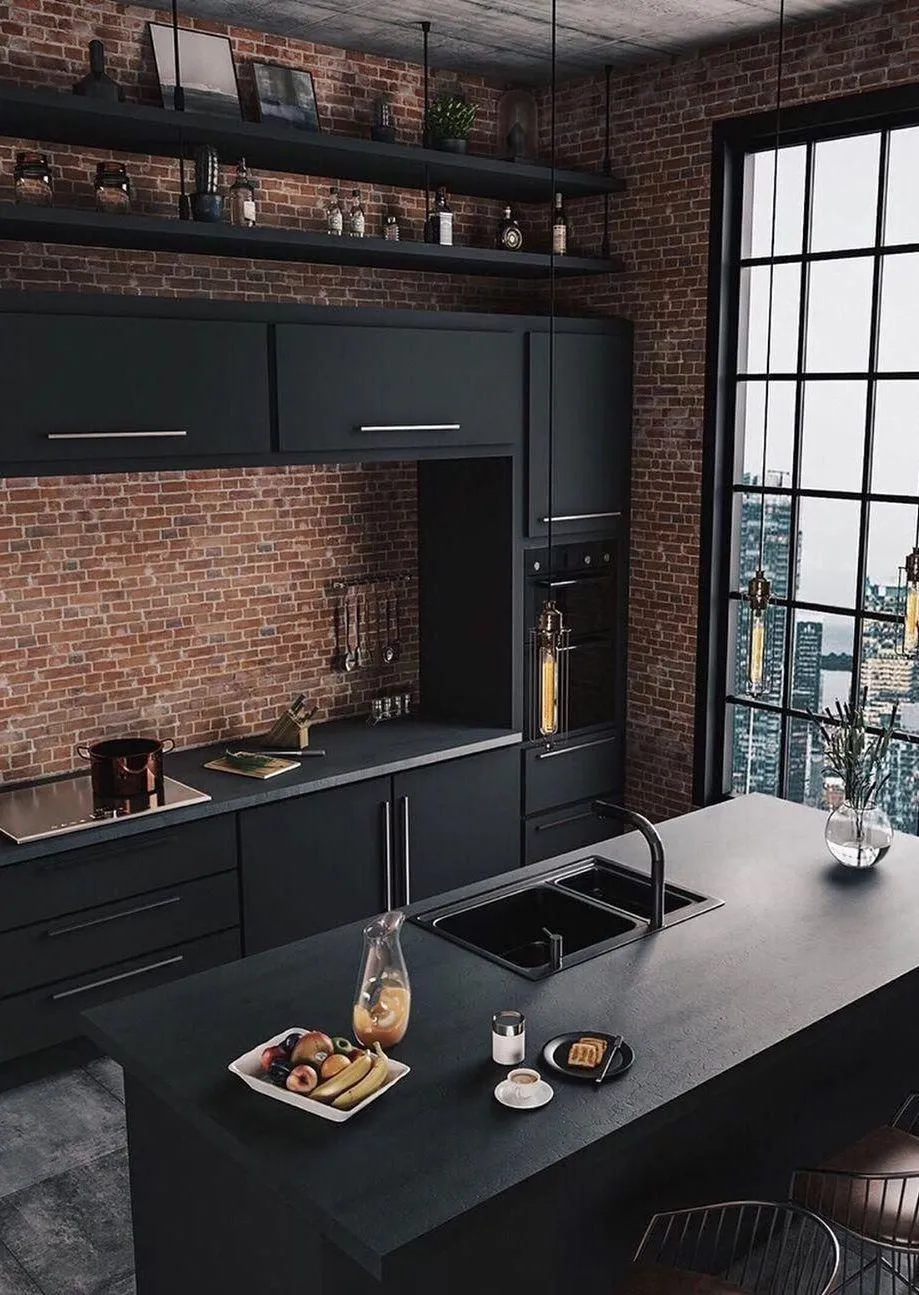Embracing the Industrial Gothic Kitchen
The industrial gothic kitchen seamlessly blends the raw, utilitarian aesthetic of industrial design with the dramatic, romantic elements of gothic style. This unique combination creates a kitchen space that is both visually striking and deeply inviting. It’s a bold choice that speaks to a love for history, art, and a touch of the unconventional. The industrial aspect often brings in exposed brick, metal fixtures, and a sense of unfinished elegance, while the gothic influence introduces dark colors, ornate details, and a moody ambiance. This style is perfect for those who appreciate a kitchen that makes a statement, going beyond the ordinary to reflect a distinctive personality and a passion for design. This guide will walk you through the key elements and ideas to achieve this captivating style.
The Allure of Industrial Gothic Decor
The allure of industrial gothic decor lies in its ability to create a space that feels both grounded and ethereal. Industrial design brings in the strength and simplicity of raw materials, while gothic elements infuse the space with a sense of mystery and grandeur. This combination is more than just a trend; it’s a statement about appreciating the beauty of contrasts. It’s a style that favors authenticity, with imperfections celebrated rather than hidden. The dark color palettes, dramatic lighting, and carefully chosen accessories create a space that is both functional and a work of art. It reflects a sense of history and a bold personality, offering a unique aesthetic that resonates with those who appreciate the beauty of the unconventional and the allure of the past.
Understanding the Industrial Aesthetic
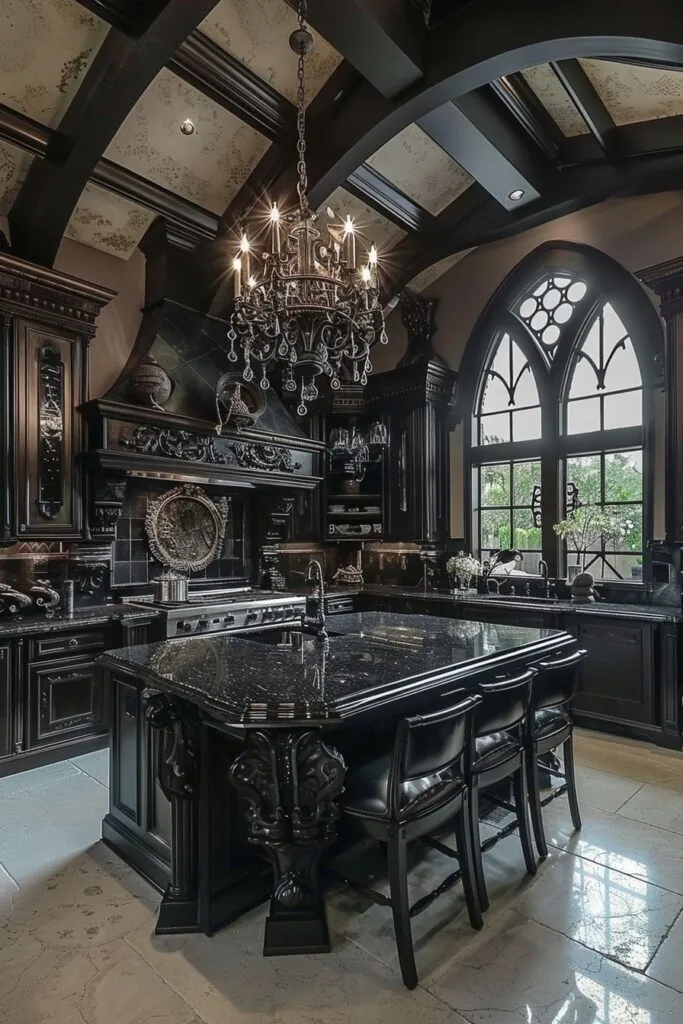
At its core, the industrial aesthetic embraces a minimalist approach with an emphasis on raw materials. Think exposed brick walls, concrete floors, and metal fixtures. Functionality is prioritized, with a nod to the factories and warehouses of the past. The color palette is typically neutral, featuring grays, blacks, and whites, with occasional pops of color. The key is to create a space that feels open, uncluttered, and authentic. The use of reclaimed materials, such as repurposed wood or vintage metal pieces, adds character and history, creating a sense of enduring style. It is a design style that values simplicity, functionality, and the beauty of imperfection.
Dark and Moody Color Palette
A defining characteristic of the industrial gothic kitchen is the use of a dark and moody color palette. Deep grays, blacks, and even rich, saturated blues or greens form the foundation of the design. These colors create a sense of intimacy and drama, setting the stage for the other design elements. It’s important to balance the darkness with lighter accents, such as metallic finishes or light-colored countertops, to prevent the space from feeling too enclosed. The goal is to create a space that feels both sophisticated and inviting. Consider incorporating accent walls or cabinets in a darker shade, while keeping the other elements in lighter or neutral tones. This balance ensures that the kitchen is visually appealing and reflects the gothic aesthetic effectively.
Selecting the Right Color Scheme
When selecting the right color scheme, consider the natural light available in your kitchen. If you have ample natural light, you can afford to go bolder with darker colors. If your kitchen is darker, consider using lighter shades of gray or deep charcoal, which will help to brighten the space. Accent colors like deep reds or purples can be incorporated through accessories or artwork to introduce a touch of gothic flair. Remember to test paint samples on your walls to see how the colors look at different times of the day. The interplay of light and shadow is crucial in achieving the desired moody atmosphere, so choose your colors thoughtfully to create a cohesive and visually appealing space.
Incorporating Dark Cabinetry
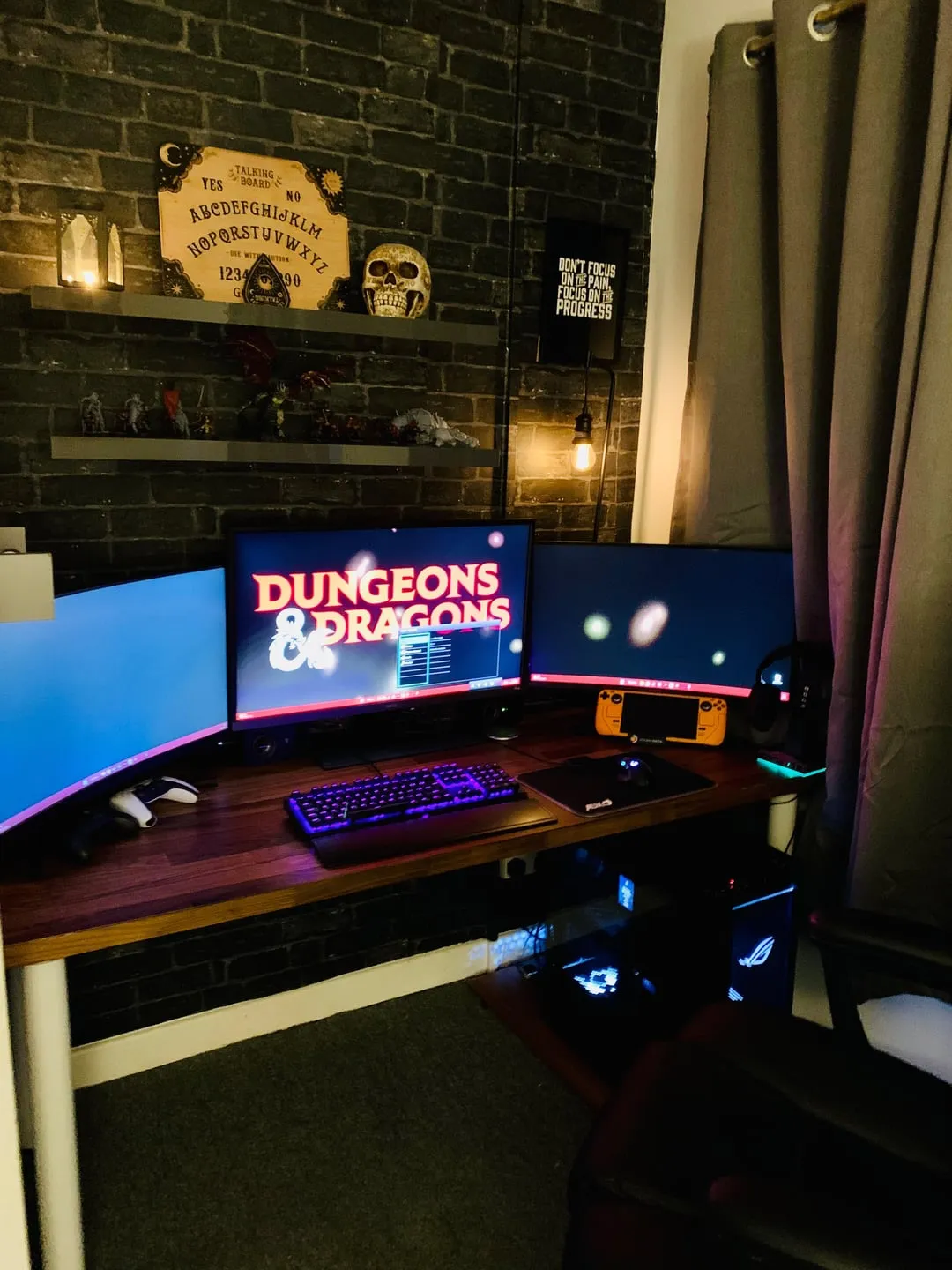
Dark cabinetry is a cornerstone of the industrial gothic kitchen. Black, charcoal, or deep gray cabinets immediately add drama and sophistication to the space. Choose cabinet styles that complement the overall aesthetic; flat-panel doors work well for a modern industrial look, while cabinets with intricate detailing can enhance the gothic feel. Matte finishes are often preferred, as they add to the moody ambiance, but consider incorporating metallic accents on the hardware to add contrast and visual interest. The key is to ensure that the cabinetry complements the other elements of the kitchen, creating a cohesive and balanced design. Ensure proper lighting to avoid making the space feel too dark.
Integrating Black and Gray Accents
Black and gray accents are essential for grounding the design and creating the desired industrial gothic atmosphere. Incorporate these colors in the countertops, backsplashes, and appliances. Black granite or quartz countertops, paired with a gray backsplash, can create a stunning focal point. Consider using black stainless steel appliances for a sleek, modern look. Hardware like cabinet knobs and pulls in black or dark bronze can add a touch of gothic flair. The key is to use these accents strategically to balance the overall look, creating a sense of depth and visual interest. These accents should complement the dark cabinetry, creating a cohesive and visually striking space.
The Gothic Touch
The gothic touch is what elevates the industrial kitchen, infusing it with the drama and elegance of gothic design. This involves incorporating elements inspired by gothic architecture and art, creating a space that feels both mysterious and luxurious. It’s about adding layers of texture and detail, from ornate hardware to dramatic lighting fixtures. The gothic touch is not about literal recreations of gothic interiors; instead, it’s about capturing the essence of the style and integrating it into the industrial framework. This could mean incorporating arched doorways, ornate mirrors, or even gothic-style artwork. The key is to create a space that feels unique, with a touch of history and a strong sense of personality.
Key Elements of Gothic Design
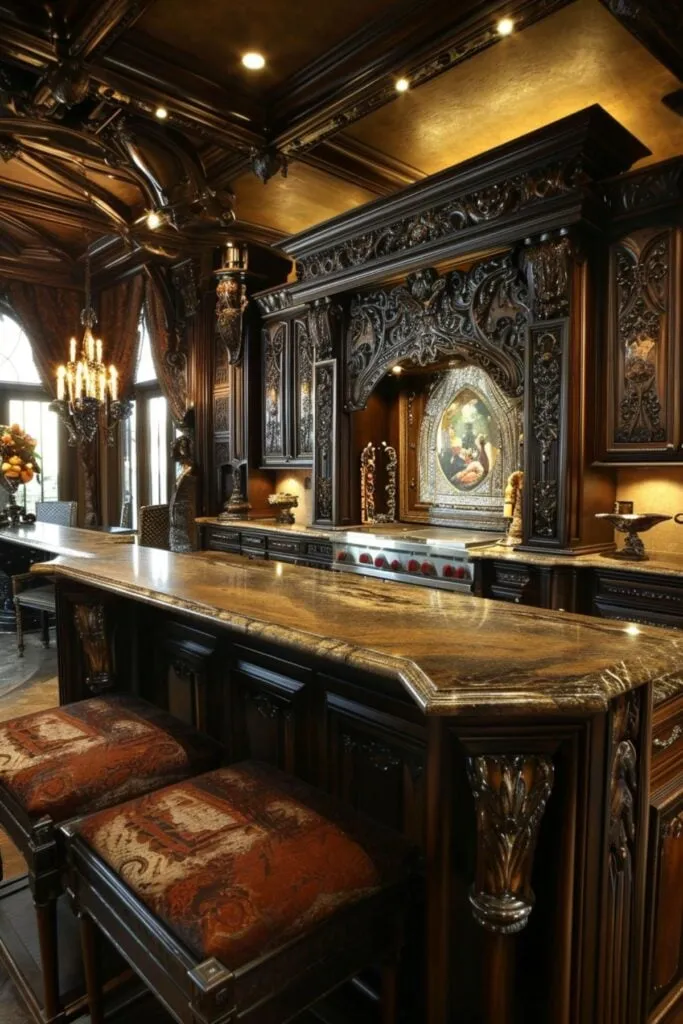
Several key elements define the gothic aesthetic. These include pointed arches, intricate detailing, and a focus on verticality. Dark, rich colors and dramatic lighting are essential, as is the use of luxurious materials such as velvet, silk, and ornate metalwork. These elements, often found in cathedrals and historical architecture, can be adapted to create a gothic-inspired kitchen. Consider incorporating arched doorways or windows, using ornate hardware, and selecting lighting fixtures that evoke the gothic style. The use of dramatic artwork and mirrors can further enhance the gothic feel. Remember, the goal is to create a space that is both beautiful and functional, blending the gothic aesthetic with the practicality of a modern kitchen.
Adding Gothic-Inspired Details
Gothic-inspired details can transform your kitchen into a unique space. Consider adding elements such as an ornate mirror or artwork featuring gothic imagery. Incorporate details like dark-stained wood paneling or a patterned tile backsplash with gothic-inspired motifs. Choose hardware with intricate designs and finishes that complement the overall aesthetic. Even the smallest details, like the shape of cabinet pulls or the style of your faucet, can contribute to the gothic feel. The goal is to carefully integrate these details, creating a cohesive and visually stunning space that reflects your personal style and appreciation for the gothic aesthetic. These touches will bring an air of mystery and elegance to your kitchen.
Using Ornate Hardware
Ornate hardware is a powerful way to incorporate the gothic style into your kitchen. Choose cabinet knobs, pulls, and handles with intricate designs and finishes that evoke the gothic aesthetic. Look for pieces with a dark bronze, pewter, or even antique brass finish. These finishes can complement the dark color palette of the kitchen while adding a touch of elegance. The hardware should be in harmony with the overall design and contribute to the creation of a cohesive look. Consider options such as Fleur-de-Lis or other gothic-inspired motifs to enhance the theme. This detail adds a layer of sophistication, bringing the gothic spirit to life within your kitchen.
Choosing Gothic Lighting Fixtures
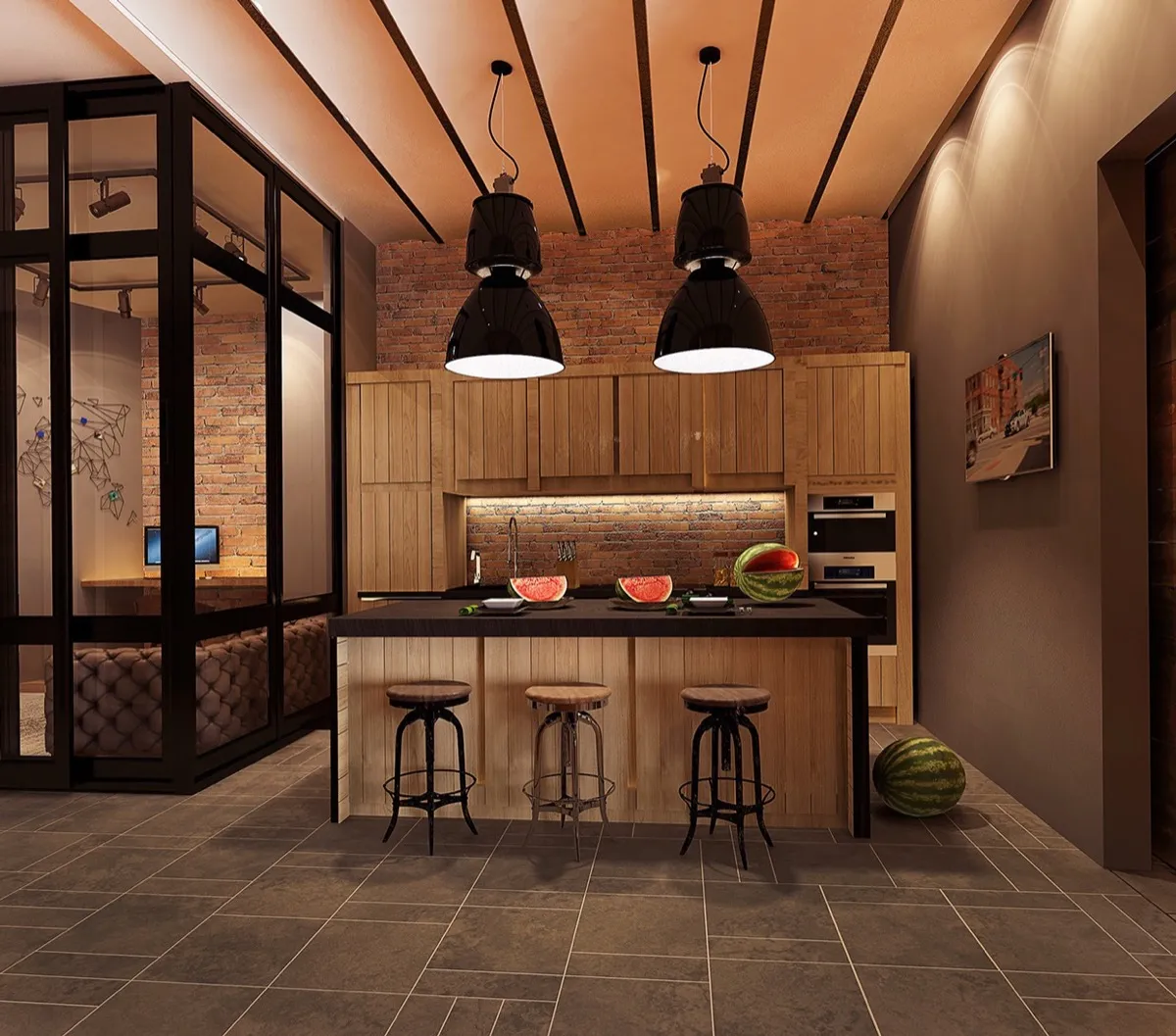
Lighting is crucial for creating the right ambiance in an industrial gothic kitchen. Choose fixtures that evoke the gothic style, such as wrought-iron chandeliers, pendant lights with intricate detailing, or sconces with a dramatic silhouette. The light should be warm and inviting, enhancing the mood of the space. Consider using dimmable lights to adjust the intensity of the lighting, creating an even more dramatic effect. The fixtures themselves should be a statement, complementing the design and adding to the overall aesthetic. These fixtures, with their historical designs, add authenticity and charm to the overall feel, providing both functionality and visual appeal.
Materials and Textures
The materials and textures used in an industrial gothic kitchen are essential in creating the desired aesthetic. A combination of raw and luxurious materials can achieve a beautiful blend of styles. Incorporating textures adds depth and visual interest, ensuring the space feels both inviting and sophisticated. The materials you choose should not only be visually appealing but also durable and functional, ensuring that the kitchen remains practical for everyday use. This section explores how to incorporate these elements effectively.
Incorporating Metal and Stone
Metal and stone are fundamental in achieving the industrial gothic look. Use metal in fixtures, hardware, and even countertops to add a raw, industrial feel. Consider incorporating stainless steel, iron, or even copper accents. Stone, whether granite, marble, or concrete, is essential for adding depth and texture. Use it for countertops, backsplashes, or even flooring. Consider exposed stone walls or details to add a natural and historical touch. The interplay of these two materials will create a sense of sophistication and authenticity. Remember to balance the use of metal and stone to create a visually interesting space. Use these together for a perfect fusion of industrial and gothic aesthetics.
Exposing Brick and Concrete
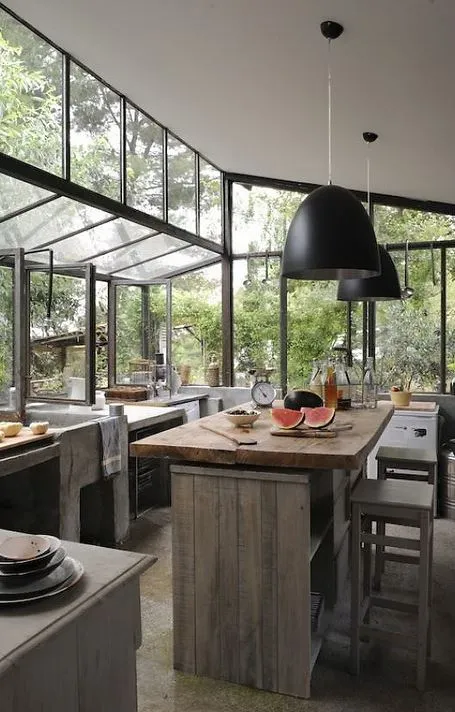
Exposed brick and concrete are iconic features of the industrial aesthetic. If possible, exposing brick walls will add texture and character to your kitchen. If you can’t expose real brick, consider using brick veneer or wallpaper to mimic the look. Concrete countertops or flooring will add a raw, minimalist feel. These materials not only look great but also bring an element of authenticity and history to the space. They will create a sense of visual interest and create a wonderful contrast with the gothic elements. Make sure to seal concrete surfaces properly to prevent staining. The use of these materials will set your kitchen apart, giving it a unique, sophisticated look.
Mixing Textures for Depth
Mixing textures is key to adding depth and visual interest. Combine smooth surfaces with rough ones to create contrast. For instance, pair sleek, stainless steel appliances with a textured brick backsplash. Use different types of stone or concrete for variety. Incorporate wood elements for warmth and contrast. Fabrics like velvet or leather can be introduced through upholstery or window treatments. The goal is to create a space that is both visually appealing and tactile, inviting touch and adding a sense of luxury. Use a combination of these textures to create a perfect balance between the industrial and gothic styles.
Furniture and Fixtures
Selecting the right furniture and fixtures is critical for completing the industrial gothic kitchen. Pieces should be both functional and in line with the overall aesthetic. Incorporate furniture pieces that have a sense of history and character, with dark finishes and ornate details. This section explores specific ideas to help you make the right choices to ensure your kitchen’s theme is consistent and visually appealing.
Selecting the Right Kitchen Island
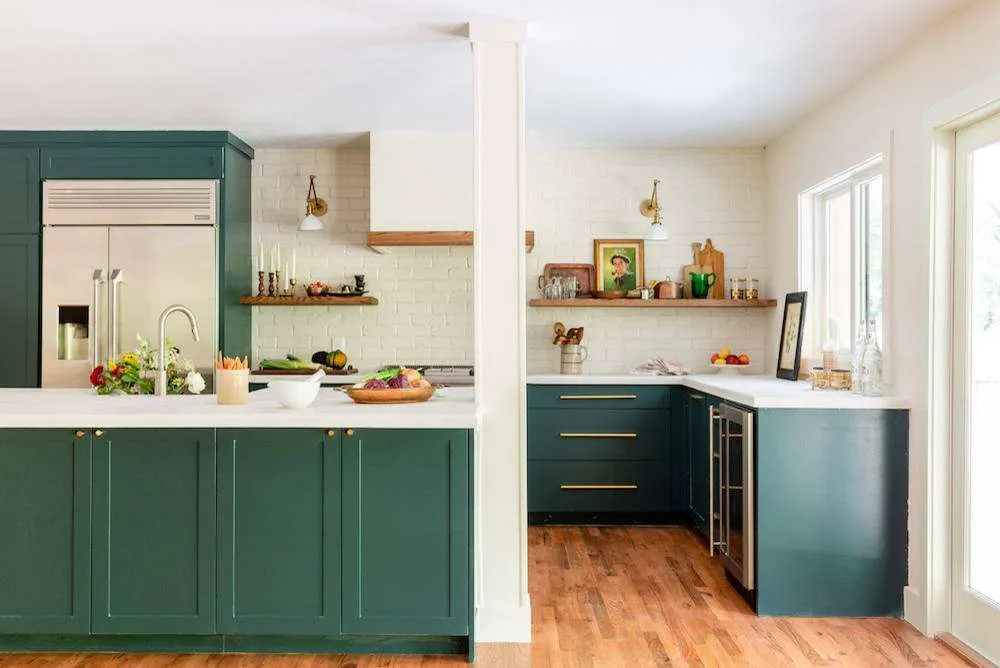
The kitchen island can be a focal point in an industrial gothic kitchen. Choose an island with a dark-stained wood or metal base and a stone or concrete countertop. The design should be substantial and visually striking, offering functionality and aesthetics. Consider an island with open shelving to display your cookware or gothic-inspired accessories. You could also use a butcher block top for a more industrial look. Ensure the island complements the cabinetry and other elements of the kitchen. The island should be as functional as it is beautiful, providing additional workspace, storage, and a place for gatherings.
Choosing Gothic-Style Dining Sets
When choosing a dining set, look for gothic-style pieces with intricate details and dark finishes. A table made of dark wood or with a metal base can create a gothic feel. Pair it with chairs that have a high back or gothic-inspired carvings. Upholstered chairs in velvet or leather add a touch of luxury. The dining set should enhance the overall aesthetic and create a cohesive space. Consider a table made of reclaimed wood for added character or a metal table with ornate legs. These elements should complement the industrial gothic design, enhancing the style and setting the mood for intimate gatherings and dining experiences.
Finding the Perfect Bar Stools
Bar stools should complement the style of your kitchen. Look for stools with metal frames and leather or velvet seats. The design should be both functional and visually appealing, with a dark finish to fit the color palette. Consider stools with a backrest that features gothic-inspired details. The goal is to create a cohesive look that enhances the industrial gothic theme. Whether you opt for adjustable height or fixed-height stools, ensure they offer comfort and style. These are essential for providing comfortable seating while reinforcing the overall design. The choice in bar stools is an excellent opportunity to further add touches of gothic influence.
Decor and Accessories
Decor and accessories are essential for personalizing your kitchen and enhancing the industrial gothic theme. From artwork to window treatments, carefully chosen items can add depth and character, making the space feel uniquely yours. These final touches are what set a room apart and reflect your personality. This section gives tips on how to select the right pieces and bring your design vision to life.
Adding Gothic Art and Mirrors
Gothic art and mirrors are excellent choices for adding drama and enhancing the gothic theme. Select artwork with gothic imagery, such as gothic architecture, portraits, or landscapes. A large, ornate mirror can make the space feel larger while adding a touch of gothic elegance. Consider mirrors with a dark frame or intricate carvings to enhance the overall aesthetic. The mirror can also reflect light, creating a sense of spaciousness. Choose pieces that complement the other elements of the kitchen. When strategically placed, mirrors and artwork add a sense of mystery and character to your space. These will add depth and enhance the atmosphere.
Choosing Dramatic Window Treatments
Dramatic window treatments are crucial for adding a touch of gothic flair and controlling the amount of light in your kitchen. Consider using heavy drapes in dark, luxurious fabrics such as velvet or brocade. Opt for window treatments that complement the other design elements. The fabric and the style of the window treatment should reinforce the gothic theme. You can also consider adding wrought-iron or dark metal hardware to complete the look. They can also add privacy and enhance the overall mood of the room. These window treatments are not just functional but contribute significantly to the aesthetics.
Incorporating Unique Accessories
Incorporating unique accessories is essential for personalizing your kitchen and completing the industrial gothic look. Choose accessories that reflect your personal style, such as ornate candle holders, antique kitchenware, or vintage metal signs. Incorporate items with gothic-inspired details, such as candelabras, or decorative skulls. These will contribute to the overall look. The goal is to create a space that feels both stylish and personal, telling a story about who you are and what you love. The accessories should complement the industrial gothic design while adding character and personality to the kitchen. These will create the final touches to pull the whole theme together.
Lighting and Ambiance
Creating the right lighting and ambiance is essential in an industrial gothic kitchen. Lighting can completely transform the mood of the room, creating an atmosphere that is both dramatic and inviting. The right combination of lighting elements can emphasize the gothic and industrial elements, enhancing the overall aesthetic and ensuring that the kitchen feels both functional and visually appealing. This section explores the key elements of lighting and how to create the perfect ambiance.
Creating the Right Atmosphere
The right atmosphere is all about creating a mood that is both dramatic and inviting. Use a combination of lighting elements to achieve this. Consider layering your lighting with ambient, task, and accent lights. Ambient lighting provides general illumination, task lighting is focused on specific areas, and accent lighting is used to highlight key features. Ensure that your lighting is adjustable, so you can alter the mood. Using dimmers can allow you to create the right atmosphere. Aim to create a space that feels mysterious and luxurious, setting the perfect stage for dining and gatherings. The right atmosphere can really bring the room to life.
Choosing the Right Lighting
Choosing the right lighting is critical for achieving the industrial gothic look. Opt for fixtures with a dark, metallic finish or those that feature intricate detailing. Layer your lighting with ambient, task, and accent lights. Pendant lights over the kitchen island, sconces on the walls, and chandeliers above the dining area can all contribute to the overall lighting scheme. Ensure you have enough lighting for cooking and preparing food, and use accent lighting to highlight specific architectural details or artwork. The right combination of lights will enhance the gothic and industrial elements. These lighting choices will complete the look.
Adding Candles and Dim Lighting
Adding candles and using dim lighting are great ways to enhance the gothic ambiance. Candles create a sense of mystery and romance. Place them on countertops, shelves, and tables. Opt for candles in ornate holders or with a dark finish. Consider using dimmable lights to adjust the intensity of the lighting, creating a more dramatic effect. The soft glow of candles can bring a sense of warmth and create a unique atmosphere. These elements will take the atmosphere to the next level. This combination will enhance the ambiance and create the perfect mood.
Budget-Friendly Gothic Kitchen Decor
Designing an industrial gothic kitchen doesn’t have to break the bank. There are many ways to create a stylish, gothic-inspired space without spending a fortune. By focusing on DIY projects, second-hand finds, and strategically chosen accessories, you can achieve a stunning look while staying within your budget. It is possible to create the kitchen of your dreams without overspending. This will help you make the most of your budget.
Tips for Decorating on a Budget
Here are some budget-friendly tips for decorating your kitchen. Start by repurposing existing furniture or accessories. Give your cabinets a fresh coat of dark paint. Search for second-hand items in thrift stores and antique shops. Look for affordable accessories that incorporate the gothic and industrial elements. Plan your budget carefully. Prioritize your spending on the most important elements, such as paint and hardware. These tips will help you create a stunning kitchen without exceeding your budget. Always try to keep things simple, and focus on a few key pieces to help you save.
DIY Industrial Gothic Decor Ideas
DIY projects can be a great way to save money and personalize your kitchen. Create your own artwork or mirror frames. Make your own candle holders. Repurpose old items to create a rustic look. You could transform old metal objects into unique decorations. Explore options that add style while keeping expenses low. With a bit of creativity, you can craft unique pieces that will reflect your style. This can create an original and unique style.
Finding Affordable Accessories
You can find affordable accessories in thrift stores, antique shops, and online marketplaces. Search for gothic-inspired artwork, vintage kitchenware, and unique decorative items. Don’t hesitate to mix and match items from different sources. Shop online, and be sure to compare prices. Be patient, and look for sales. These accessories are essential for completing the gothic-industrial look. Accessories add depth and character to the kitchen. By choosing carefully, you can bring this style to life without overspending.
